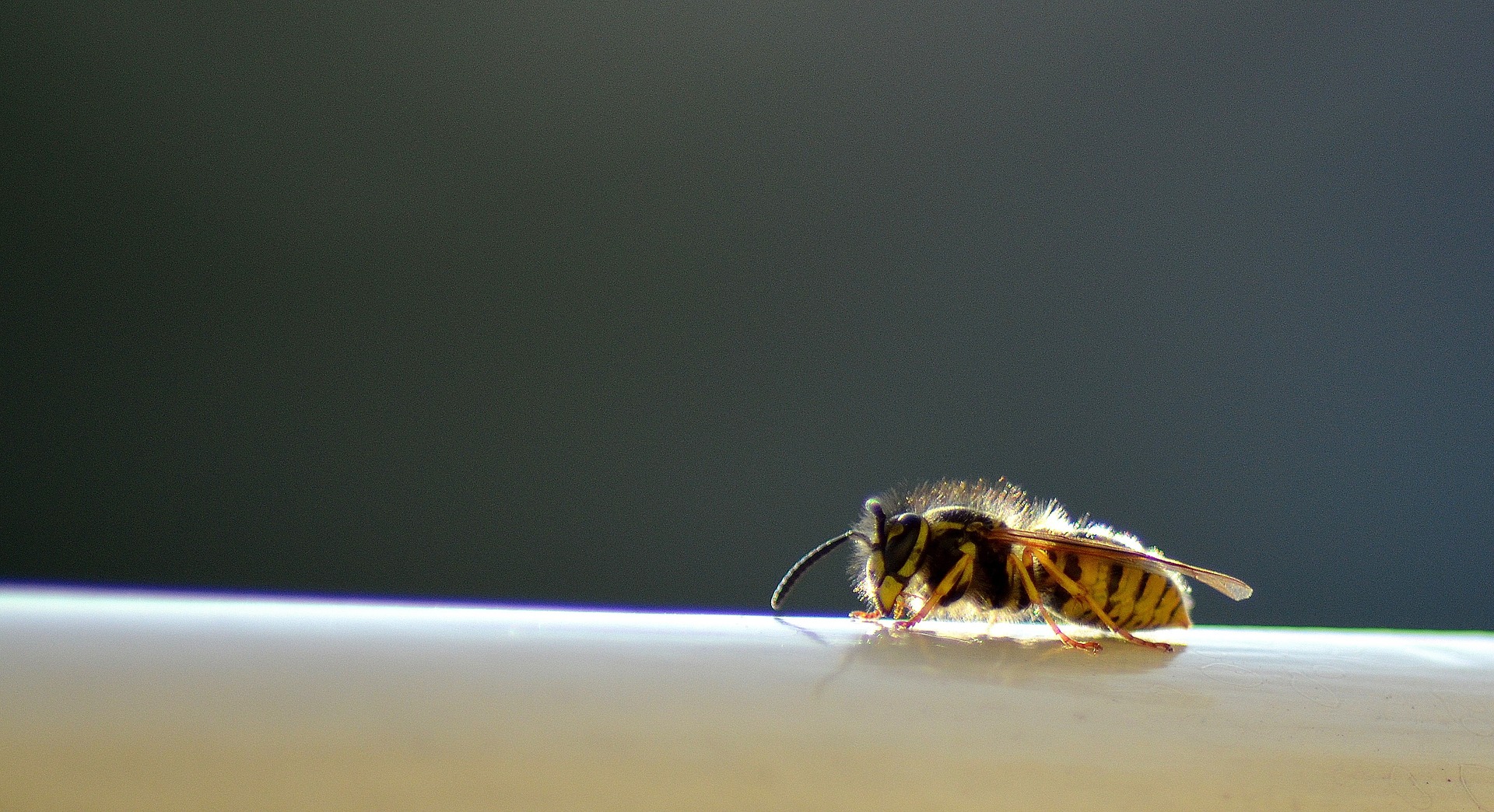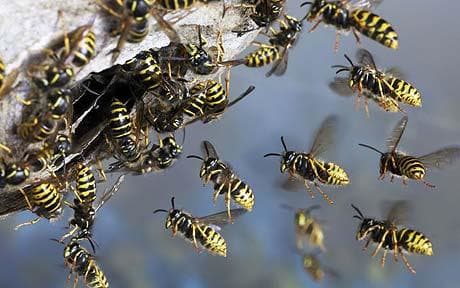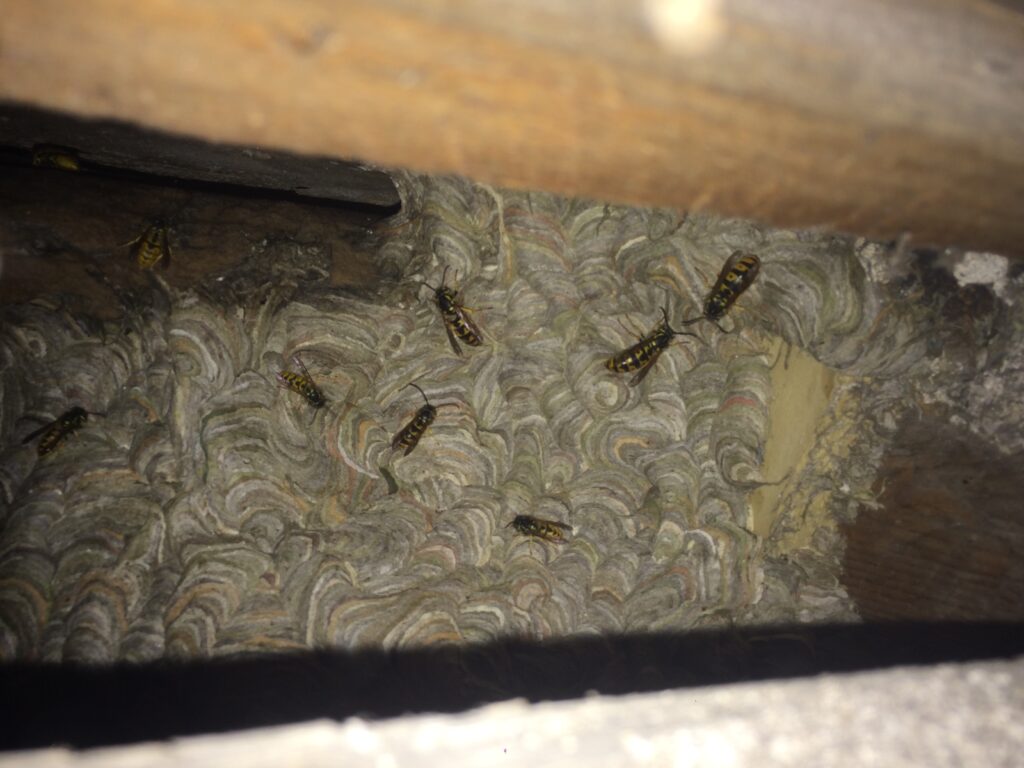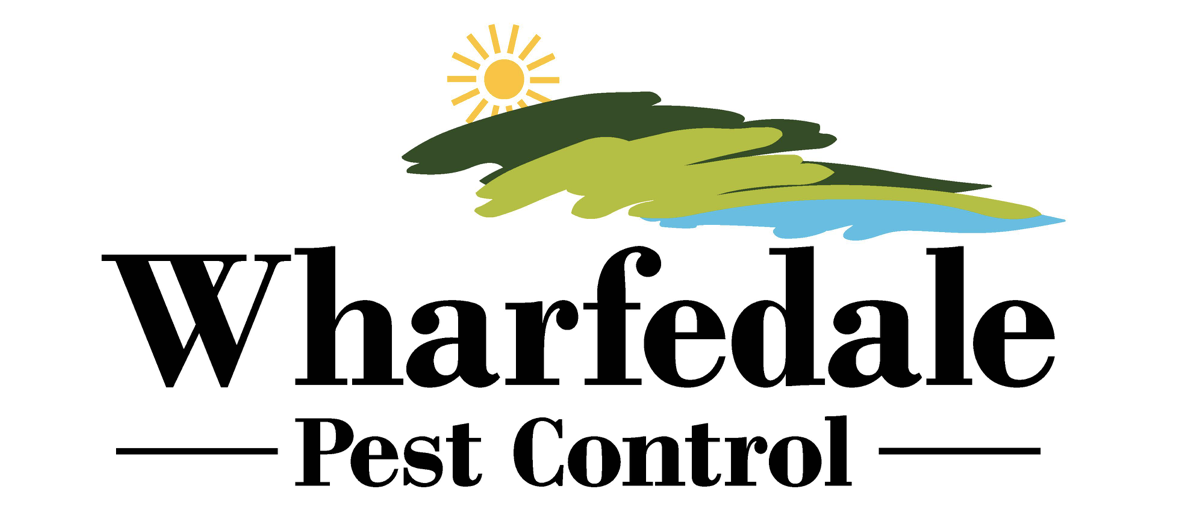

Industry approved removal of wasp nests and bee hives
Industry approved removal of wasp nests and bee hives
Hive removal, swarm and colony control

Wasps and bees are considered as useful insects, acting as pollinators and helping to control other insects. Many variants don’t pose a risk to humans, but they can be a nuisance, and of course there is the risk of stinging.
Wasps and bees can be worrying for homeowners and property managers, especially the risk of stings to those who may suffer an allergic reaction.
The methods of treatment differs greatly between wasps and bees, and indeed among variants within the species.
Our pest control services are tailored to the specific species and the most effective treatment method.
WASPS
CHARACHTERISTICS
Wasps have a vivid yellow and black pattern along their body, and can grow to around 10-15mm in length. The queen wasp is larger at around 20mm in length.
Wasps live within their nest, and feed mainly on other insects. The queen will emerge from winter hibernation and look to build a new nest in the Spring. The preferred nesting sites include in underground cavities such as abandoned rodent nests, or in spaces such as sheds, garages, lofts and compost bins.
In Spring they mainly live within their nest, but during warmer summer months they will fly looking for sweeter food, which is when they become a nuisance to the general population.
One nest can produce up to 30,000 wasps in a year, which is why it is important to treat the whole nest and not just individual wasps.
Try not to disturb wasp nests as this can cause them to panic and swarm. If you find a wasp nest, leave it alone and call us so we can assess the best way to treat the wasps and the nest.
BEES
CHARACHTERISTICS
In the UK there are several types of common bees. Most of these do not cause a threat to the majority of the population. Indeed, bees are important for pollination and there is a campaign to make them a protected species in the UK. While the risk to people is small, they can pose a risk to humans and animals through their sting, and so you may want to remove them from your home or commercial property.
The honey bee and masonry bee are both a dusky brown colour and can easily be confused with wasps. The bumble bee is the larger, fluffy yellow and black bee.
A honey bee can sting but only once, and masonry or mortar bees can sting but they are not powerful enough to penetrate human skin. Bumble bees can also sting, and several times as their stingers do not contain barbs like the honey bee. All of these bee varieties are usually incredibly docile, and would only sting out of self-protection if they felt threatened.
Damage to buildings by Masonry/Mortar Bees
The nesting habits of masonry bees can cause damage to buildings in some instances, as they nest under roof tiles, in old nail holes or between bricks. However, problems will only occur if you have a large population of bees nesting in the same place, and they are usually solitary animals.
Honey Bee Swarms
Most of the time a swarm of honey bees doesn’t pose a risk to people, but they can be a frightening sight. If they are close to homes where someone has an allergy to the bee sting venom then they are a bigger risk.
Many swarms will move on by themselves after a few days, but in some instances the swarms can be moved by a qualified beekeeper or may need to be controlled.
How Do We Control Wasps & Bees
When you call Wharfedale Pest Control we will ask you several questions to ascertain the best method of control, be that bait or traps, or another solution.
Before we arrive you shouldn’t move any droppings or evidence of the rats or mice as this will help us to decide on the best course of pest treatment.



